
Since 2018, Cool Innovation has conducted various pilot projects in collaboration with our customers. These experiences have not only significantly contributed to the upgrade of our technology but also provided us with a deeper understanding of fruits, vegetables, and seafood. In this section, we would like to share some of the results of these endeavors.
Seeing Is Believing
Strawberry
45 Days
Tochiotome, a specialty of Tochigi Prefecture, Japan, was examined on the 26th day using Cool Innovation technology. The tests showed no changes in appearance, taste, and texture compared to the first day. Even after two months, all three indicators remained almost unchanged.
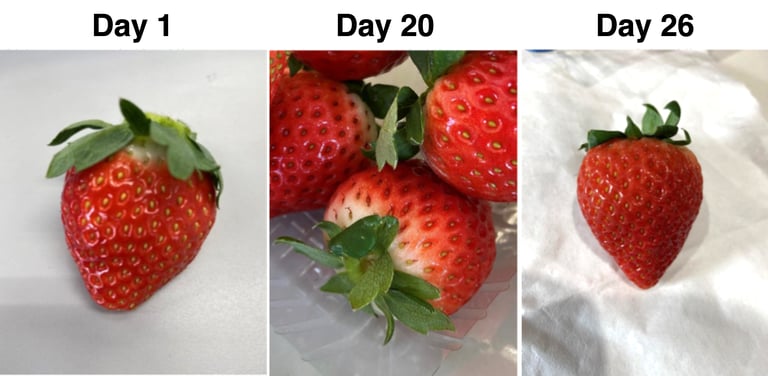

Shine Muscat Grape
90 Days
These Japanese premium grapes maintained almost unchanged appearance and texture even after being stored for 90 days using Cool Innovation technology. Freshness should be judged by the stem rather than the fruit itself, and after 90 days, the stem remained moist, plump, and green.
These grapes were stored without any packaging, but with suitable packaging, even better freshness preservation is expected.
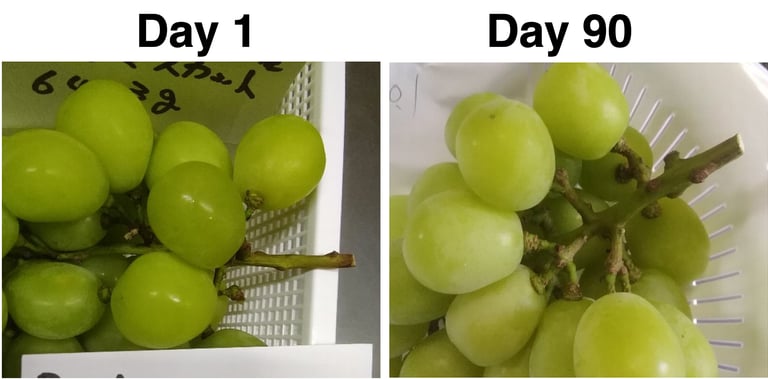

Green Lettuce
45 Days
Green lettuce produced at the foot of Mount Fuji was tested for appearance and inspected on the 20th day using Cool Innovation's technology.
Even when displayed in supermarkets, it maintained a level of freshness that made it one of the first to be purchased.
It was confirmed that freshness can be maintained for up to 45 days.
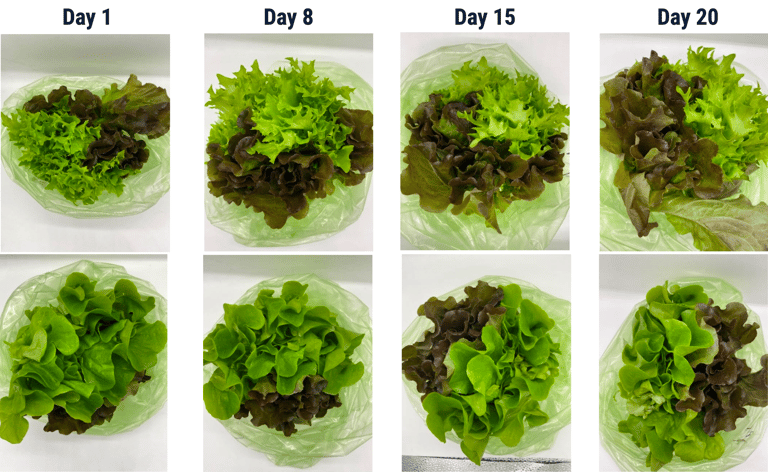

Niitaka Pear
157 Days
We stored the Japanese variety of Nii Takana pears along with grapes for 5 months. After 157 days of storage, the weight decreased by about 8%, but the appearance was at a sellable level. The texture just below the skin was slightly dry, but over 90% of the taste and texture maintained its freshness. The condition is expected to be significantly improved with PET packaging.
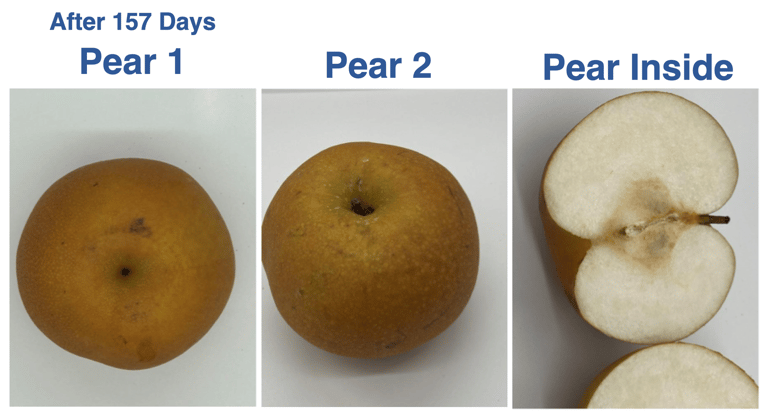

Chestnut
170 Days
Generally, chestnuts can only maintain their freshness for a few weeks, but in the Cool Innovation environment, they were able to stay fresh for 170 days.
Furthermore, the increased sweetness due to low-temperature aging amazed professional producers during tastings, leading them to remark that these were "the best chestnuts they've ever tasted."

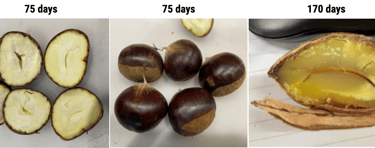
Flowers
30 Days
Cool Innovation was able to extend the lifespan of flowers by up to 30 days, maintaining a freshness as if they had just started to bloom.
When taken out of our storage environment, the flowers appeared "groggy," but after 2-3 hours, they looked almost fully bloomed.
Furthermore, the samples were cut flowers purchased from a local florist, not directly from the producers. No preservatives or chemicals were used to extend the life or maintain the freshness of the flowers.

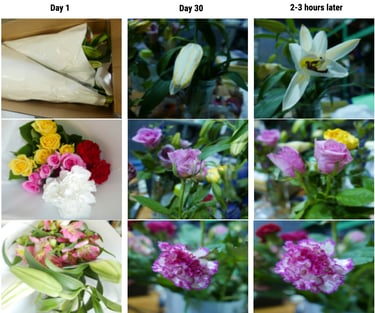
Tomato
20 Days
A 20-day freshness test was conducted on tomatoes grown in a Japanese plant factory. The results showed no changes in appearance or taste. Regarding firmness, an important indicator of tomato texture measured in kilograms (KG), the tomatoes maintained a consistent level of firmness throughout the testing period.
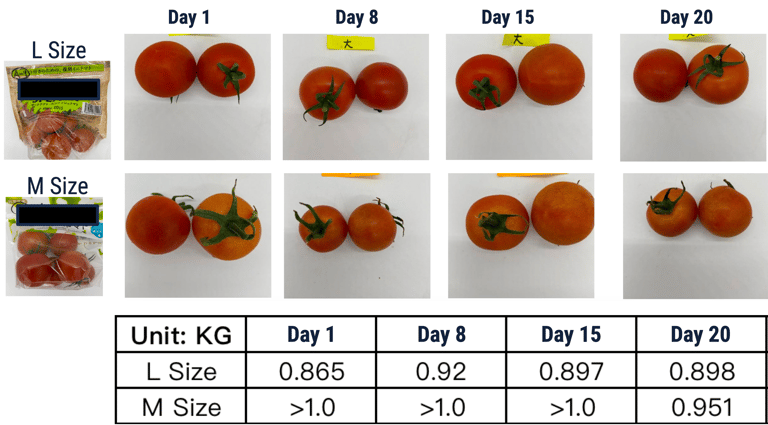

Spinach
33 Days
Here are the results of the 33-day freshness test on spinach from Wakayama. The appearance showed minimal difference, and the weight decreased by only 0.2%, indicating that the moisture was well retained within the plant.
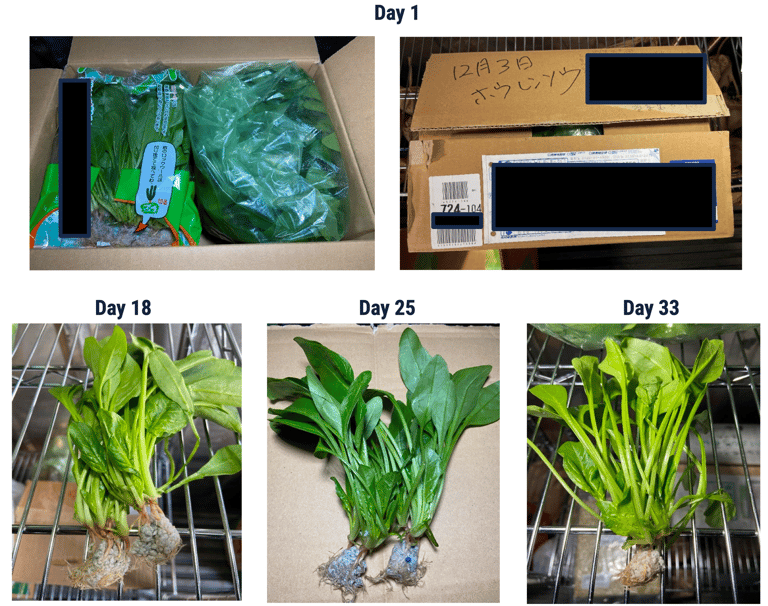

Asparagus
25 Days
We conducted a freshness preservation test on green asparagus from Nagano. The asparagus was stored in FH film bags with ethylene-absorbing properties, with the bags loosely closed without sealing.
After 14 days, the asparagus showed no change in appearance or flavor, except for one spear that had turned yellow. When retested after 25 days, four spears had discolored, but the remaining 20 spears were as fresh as the initial state, with no significant changes in taste or aroma. There was minimal elongation between nodes, bending, wilting, or discoloration at the base, maintaining their fresh condition.
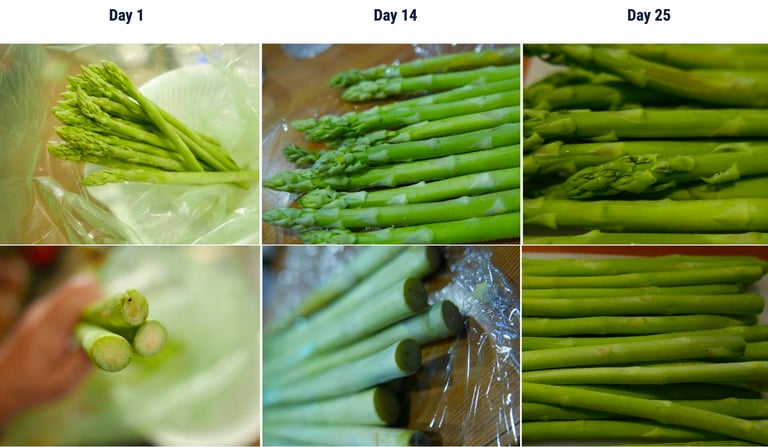

Red Sea Bream
7 Days
Japan is renowned for being the largest consumer of fish in the world and for its tradition of eating fresh fish as sashimi, which demands high standards for seafood freshness. Cool Innovation conducted a one-week freshness preservation test on red sea bream (madai). Here are the results:
Comparing fish stored with a cloth, without a cloth, and with the conventional ice method, the best results were observed with the cloth method. Even after a week, both transparency and crunchiness were somewhat retained. Although a slight odor was detected, it was at a level indistinguishable when served as sashimi.
Without the cloth, the fish showed increased opaqueness and odor compared to the cloth method. The conventional ice method resulted in a strong odor spreading even before preparation. The flesh clung to the knife, was highly opaque, lacked crunchiness, and had a strong odor, making it unpalatable without cooking.

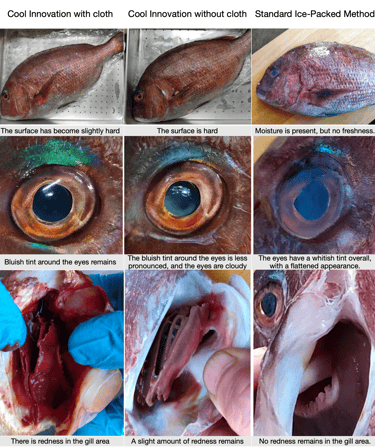

Inquiries and Requests
Cool Innovation is seeking collaborative partners, academic institutions, government agencies, agricultural stakeholders, and food manufacturers to utilize, promote, and research our innovative solutions for maintaining the freshness of fruits and vegetables.
Our advanced technology not only addresses the global issue of food loss but also enables a shift from air transport to sea transport, significantly reducing costs and CO2 emissions.
With successful case studies in Japan, Thailand, and the Philippines, our technology, which guarantees reliable ROI through a subscription model, achieves 10 times* better freshness preservation compared to existing methods (*duration varies by product).
We would be delighted to work with you to reform the fresh produce supply chain and contribute to a more sustainable future.
For any questions or requests, please fill out all necessary details in the inquiry form and provide as much detail as possible about your needs. We will respond promptly and contact you regarding specific needs and solutions. Thank you.